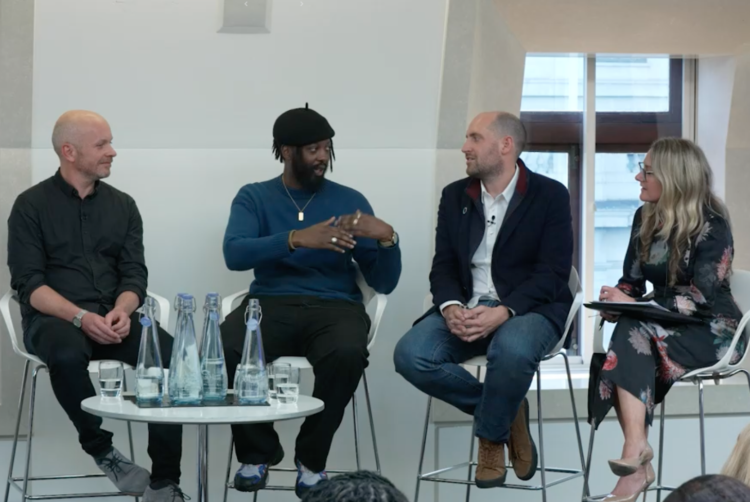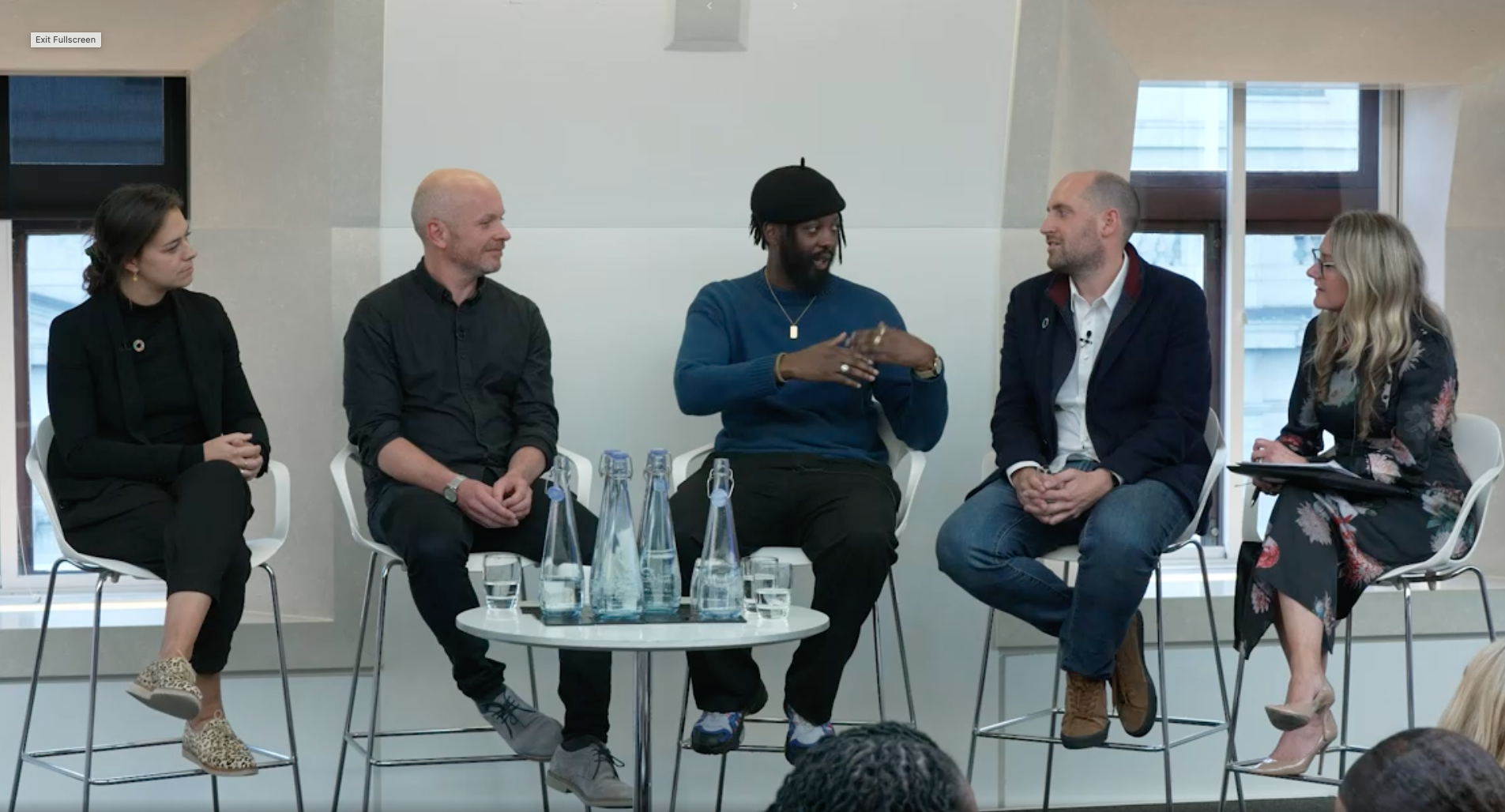White leaders ‘too nervous to have a voice around diversity’

A lot of positive change has happened over the last few years for more ethical and inclusive advertising, but there is still a long way to go and a lot more to do.
This was the perspective of a panel at Mediatel’s Future of Media conference that tackled the question: Is there a growing gap between words and action when it comes to invested media responsibly?
Rachel Forde, CEO of UM UK, Ibrahim Kamara, founder of GUAP, Jerry Daykin, senior media director at GSK Consumer Healthcare, Patrick Affleck, CEO of Havas Media Group and Claire Barnett, executive director at UN Women UK came together to provide practical advice for industry leaders to “put their money where their mouth is” and avoid greenwashing, tokenism and “rainbow-washing”.
Do not be afraid to have a voice on diversity and inclusion
At the beginning of the session, Daykin said: “I am super middle-class, super white, super privately-educated and getting super middle-aged.
“I think a lot of people in my situation are too nervous to have a voice around diversity and inclusion, around reshaping our industry, but, like it or not, White people do run a lot of [the] industry still and we absolutely do need to stand up and try and make a difference and try and listen to people who have very different lived experiences than ours.”
He added later on that he is also “very gay” and understands to some extent what it’s like to not be reflected in advertising. Daykin discussed how there is “a long way to go on that front” but he pointed to brands making commitments with Creative Equals, more representation of diverse groups in TV ads than five years ago and work with Publicis Groupe on its diversity forum as steps in “the right direction”.
Although he warned against “diversity-washing”, Daykin added this shift needs to keep changing not just in ads that are produced by the industry but in the makeup of its hiring as well.
The industry needs to be an inclusive environment for people to stay in
Forde highlighted the All In Census which surveyed 16,000 respondents and found one in three black people working in the industry are likely to leave because of the lack of inclusion they see.
UM and Havas Media Group both have initiatives, Future Academy and Platform respectively, which go into schools to “recruit, encourage and attract talent from disadvantaged backgrounds”.
Affleck mentioned the government’s Kickstarter programme has “supercharged” Havas Media Group’s initiative allowing it to look for 100 applicants as opposed to 30.
But recruiting diverse talent is different to retaining it, as it’s important that you have a diverse and inclusive team where you can create “a culture of belonging” to “knit teams together” according to Daykin and Forde.
Not only that, but diversity helps environmental and social good (ESG) as a whole, as Barnett explained: “We sometimes think are we helping the environment or social good but they are so closely connected and better diversity is one of the best levers that you can pull to effect environmental change globally.”

(Right-left: Barnett; Affleck; Kamara; Daykin and Forde)
Affleck pointed to Havas Media Group investing £150,000 value in cash, value, property, or media in start-up businesses run by under-represented groups spearheaded by its diversity and inclusion committee.
This kind of initiative needs to happen at scale, or “the momentum of many” as Forde put it, to avoid tokenism.
Use up-and-coming talent ‘on the ground’
One of the main problems in the industry is that it is based on nepotism which neglects emerging talent who may be better-suited to the work.
Kamara told attendees his company GUAP gives opportunities to people “close to the source of what brands are actually trying to do” who deserve the job, even though they might not have anyone in the room to recommend them.
This is the model that people have “gravitated towards” especially since 2020, he said.
Also “unconscious bias” affects every stage of the marketing process from the insights you gather, to the brief you write, the partners you work with, the team you have and so on, Daykin added, but you can use metrics from UN Women’s Unstereotype Alliance and WFA Guide to help tackle this.
Barnett added that in order to “bridge the authenticity gap” you cannot write a script or call to action for people from marginalised communities and expect it to feel authentic or win a Cannes Lion, instead listen to people who are already “desperately shouting for what they want” and work with them to co-design the creative process.
Brands have more power to affect change than they think
Barnett said: “The pandemic has shown us you can change human behaviour overnight in a way I do not think any of us thought was possible and as brands we have the opportunity to affect behaviour more quickly than we think and I think there is real hope there.”
She added that in a survey carried out by the UN Women as part of the Unstereotype Alliance supported by UM, women from marginalised backgrounds when asked trusted brands to do more for social good than politicians, social media activists and the police.
This is something Affleck mentioned in regards to COP26 and climate change in that advertising can be a positive influence to help shift lifestyles and consumer behaviours.
He spotlighted training by the Change the Brief alliance to avoid greenwashing and look at what more brands can do in a credible way.
Barnett advised attendees not to bid on keywords from purpose campaigns or charities or allow clients to do it as it takes away donations which can help many different causes.
Authentically talk to communities and curate long-running partnerships
Daykin made the point that brands turning up at Pride with a rainbow flag does not compare to year-long partnerships with people involved in the communities you are trying to reach.
He advised to “lean in positively” with partnerships and alliances, these could be editorial or private marketplaces or networks. He gave the examples of Sensodyne, Voltarol and The Gay Times.
Kamara, Daykin and Forde all talked about leveraging editorial content to speak more authentically to communities, bring business benefits and address issues through brand advertising that might be impacting them.
Kamara added it’s important to share resources and voice horizontally and, while it is easy to buy reach, it’s not easy to buy trust and impact. So he advised brands to collaborate with communities and newer companies to help with authenticity.



